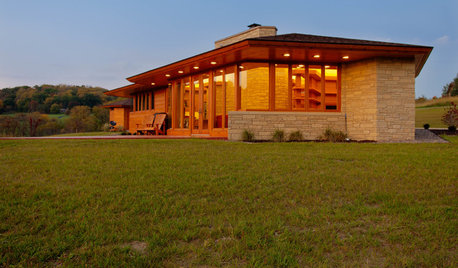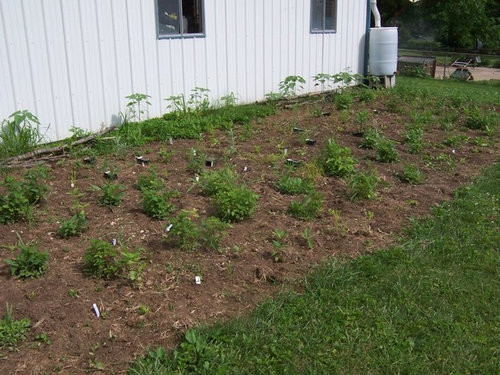A WS Prairie
Callirhoe
9 years ago
Related Stories

HOUZZ TOURSHouzz Tour: Usonian-Inspired Home With All the Wright Moves
A Chicago couple's weekend retreat fulfills a long-held dream of honoring architect Frank Lloyd Wright
Full StorySponsored
Last fall I ordered Prairie Moon's PDQ prairie seed mix. I wanted to sow prairie plants in my new berm. Unfortunately, when I got the kit, it overwhelmed me. There were multiple packets to be applied and in different ways. I set it aside, not sure what I'd do. I was also worried that if I spread the seed on the berm rain would wash away whatever the birds didn't eat.
Then the time arrived for me to begin my winter sowing and the light bulb came on while I was busy sowing my other seeds. I decided to sow my prairie seed mix in tubs. I am so glad I did!
By the time planting time rolled around, I had decided that we were going to re-do our berm and replace the eye-sore of a ditch with a gentle swale. That meant I suddenly had no place to plant all my prairie plants! My mother had been wanting a prairie, so I took my tubs of prairie over to her. We were slow getting the plants out of the tubs and actually planted. It was mid-June when we planted "hunks of prairie." The picture shows you how it looked. I thought it looked like a pretty darn good start, going from bare earth to this. (I grew the sunflowers, but they weren't WS). There were about a dozen plants that were not WS and you can see their containers laying in the bed as plant markers. Everything thing else in there was WS. Since that time, we've continued to add individual prairie plants that I grew from WS. Everything is native to our county.


CallirhoeOriginal Author
tepelus
Related Professionals
Erie Landscape Architects & Landscape Designers · Leawood Landscape Architects & Landscape Designers · Clermont Landscape Contractors · Lakeland Landscape Contractors · Belmont Landscape Contractors · Bridgeview Landscape Contractors · Framingham Landscape Contractors · Kerman Landscape Contractors · Morrisville Landscape Contractors · New Braunfels Landscape Contractors · North Haven Landscape Contractors · Washington Landscape Contractors · West Chester Landscape Contractors · Wheat Ridge Landscape Contractors · Merrifield Landscape Contractorsdbarron
CallirhoeOriginal Author
dbarron
ladyrose65
michey1st_gw
CallirhoeOriginal Author
greenhearted Z5a IL
gardenman101